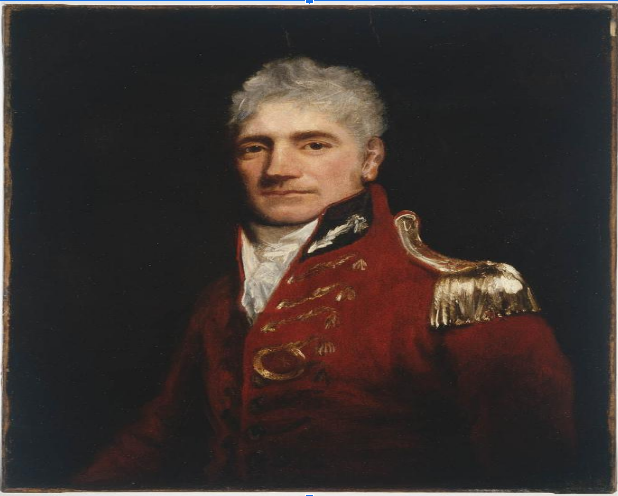Introduction
Lachlan Macquarie (1761-1824) is a pivotal figure in Australian history, often referred to as the “Father of Australia” or the “founder of modern Australia.” Serving as the Governor of New South Wales (NSW) from 1810 to 1821, Macquarie is credited with transforming the penal colony into a burgeoning society for free settlers. His tenure was marked by significant infrastructural and institutional developments. However, Macquarie’s legacy is increasingly subject to scrutiny, particularly in light of contemporary movements like Black Lives Matter, (BLM) which have prompted a critical re-evaluation of colonial figures and their actions. Two contentious aspects of Macquarie’s life are his involvement in violence against Indigenous Australians and his history as a slave owner of Indian boys. This essay aims to critically analyse these aspects of Macquarie’s legacy, highlighting the complexities and contradictions inherent in his contributions to Australian history.
Macquarie’s Contributions to Colonial Australia
During his tenure as governor, Macquarie initiated extensive public works that laid the foundation for modern Sydney. These included the construction of roads, bridges, schools, and hospitals, as well as the design and establishment of iconic structures such as Hyde Park Barracks and the Sydney Mint. Macquarie’s policies also extended to social reforms, particularly in the reintegration of emancipated convicts into society. By promoting their integration, he fostered a more inclusive community for free settlers and former convicts alike, contributing to the gradual transformation of NSW from a penal colony into a thriving society.
Violence Against Indigenous Australians
Despite these developmental contributions, Macquarie’s governorship is marred by his treatment of Indigenous Australians. Historical records and recent scholarship have shed light on his involvement in punitive expeditions against Aboriginal people, most notably the Appin Massacre of 1816. During this incident, Macquarie ordered military action that resulted in the deaths of at least 14 Indigenous Australians, actions that are now widely regarded as genocidal. These acts, driven by colonial expansionist policies and racial prejudices, have led to significant re-evaluations of Macquarie’s legacy. While his contributions to colonial development are undeniable, they must be weighed against the destructive impact of his policies on indigenous populations.
Macquarie’s Time in India
Macquarie had a great military career in India and lived nearly 13 years there. Macquarie’s experiences in India were instrumental in shaping his administrative approach and understanding of colonial governance. His military career in India involved supporting British efforts to suppress resistance from local rulers, most notably during the Siege of Seringapatam in 1799, which led to the death of Tipu Sultan. This period provided Macquarie with significant exposure to the complexities of colonial administration, influencing his later governance in Australia. However, his time in India also entrenched attitudes and practices associated with imperial domination and exploitation, which would later manifest in his policies as Governor of NSW.
Macquarie as a owner of Hindu slave boys
In addition to his controversial actions in Australia, Macquarie’s personal history as a slave owner further complicates his legacy. A university college London database suggests, he inherited a vast fortune built by the slave trade after his first wife’s death Jane Jarvis. Before his governorship, Macquarie spent a considerable period in India, where he served in the British military and supported the East India Company’s mercantile activities. In January 1795, while stationed in Cochin, Macquarie and his first wife, Jane Jarvis, purchased two young boys for 170 rupees, whom he named Hector Jarvis and George Jarvis. Initially serving as domestic staff, Hector eventually disappeared in Kolkata, while George continued in Macquarie’s service, accompanying him to Sydney and remaining with him until his death. Despite the apparently cordial relationship between Macquarie and George, evidenced by provisions in Macquarie’s will, this episode underscores the hierarchies of power and obligations between the colonised and coloniser and a link between India and Australia.
Conclusion
Lachlan Macquarie’s legacy is a complex interplay of significant developmental achievements and deeply problematic actions. While his role in transforming NSW from a penal colony to a society for free settlers is undeniably pivotal in Australian history, the darker aspects of his legacy, particularly his involvement in violence against Indigenous Australians and his history as a slave owner, cannot be overlooked. The re-examination of Macquarie’s life and actions, prompted by contemporary movements advocating for social justice and historical accountability, underscores the necessity of a nuanced understanding of historical figures. A comprehensive and truthful historical narrative must recognise both the positive and negative aspects of their legacies.
References
- That black Hindu slave: Lachlan Macquarie’s silent witness: SBS Australia, 26/04/2020
- Governor Lachlan Macquarie’s sword: National Museum Australia (www.nma.gov.au)
